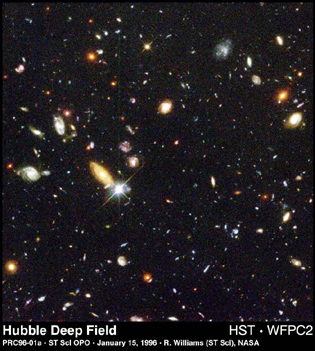

Our knowledge of galaxy clusters and clustering at redshifts greater than one is thin but has been growing steadily. ``Blank field'' X--ray and infrared surveys have recently identified a small but growing number of galaxy clusters with z > 1. However, the observational challenges for detecting and confirming such clusters remain formidable. As an alternative, targeted surveys of the environments of known, massive galaxies such as those hosting powerful radio sources provide an alternative method of ``pre--selecting'' likely sites for rich clusters, and have proven to be an efficient method of finding such systems at high redshift. I review the results of various targeted searches for high redshift clusters, and then go on to discuss galaxy clustering at z \approx 3 and its possible relation to virialized galaxy clusters at lower redshifts.
We have applied a new cluster detection algorithm to the ESO Imaging Survey, thus producing a new catalogue of cluster candidates up to z \sim 1. Such a catalogue enables one to perform statistically significant studies as well as detailed research on some of these systems individually and on their member galaxies. The ongoing follow-up of the candidates, in multi-waveband photometry and VLT spectroscopy, is now starting to produce its first results and shall be used later to study the role of environment in the evolution of galaxy populations. Three cluster candidates were thus pre-selected via their colors to be observed with FORS1 at the VLT, and the spectra taken turned out to confirm the presence of a system in each field. Redshifts were determined to be z=0.64, 0.66 and 0.71, respectively. Along the line of sight of each candidate, other systems also seem to be present and will be the aim of further research.
We consider a sample of about 50 distant galaxy clusters at z>0.15 (z \sim 0.3), each cluster having at least 10 galaxies with available redshift in the literature. We select member galaxies, analyze the velocity dispersion profiles, and evaluate in a homogeneous way cluster velocity dispersions and virial masses. We apply the same procedures already recently applied on a sample of nearby clusters (z LE 0.15) in order to properly analyze the possible dynamical evolution of galaxy clusters. We do not find any significant difference between nearby and distant clusters. In particular, we consider the galaxy spatial distribution, the shape of the velocity dispersion profile, and the relations between velocity dispersion and X--ray luminosity and temperature. Our results imply little dynamical evolution in the range of redshift spanned by our cluster sample, and suggest that the typical redshift of cluster formation is higher than that of the sample we analyze.
The Northern Sky Optical Cluster Survey is a project to create an objective catalog of galaxy clusters over the entire high--galactic--latitude Northern sky. We use the object catalogs generated from the Digitized Second Palomar Sky Survey (DPOSS, Djorgovski et al. 1999) as the basis for this survey. We apply a color criterion to select against field galaxies, and use a simple adaptive kernel technique to create galaxy density maps, combined with the bootstrap technique to make significance maps, from which density peaks are selected. This survey eliminates many of the subjective criteria of past surveys, and utilizes more information (especially colors) than the most similar recent survey, the APM (Dalton et al. 1992). This paper presents the details of our cluster detection technique, as well as some initial results for two small areas totaling \sim 60 square degrees. We find a mean surface density of \sim 1.5 clusters per square degree, consistent with the detection of richness class 0 and higher clusters to z\sim 0.3. In addition, we demonstrate an effective photometric redshift estimator for our clusters.a
The evolution of the X-ray luminosity function of clusters of galaxies has been measured to z=0.9 using over 150 X-ray selected clusters discovered in the WARPS survey. We find no evidence for evolution of the luminosity function at any luminosity or redshift. The observations constrain the evolution of the space density of moderate luminosity clusters to be very small, and much less than predicted by most models of the growth of structure with Omega_m=1. All the current X-ray surveys agree on this result. Several notable luminous clusters at z>0.8 have been found, including one cluster which is more luminous (and is probably more massive) than the well known MS1054 cluster.
I present preliminary results of a study of the stellar populations in three galaxy clusters, at redshifts z~ 0.64, 0.66 and 0.71. We are analysing the impact of environmental effects and dynamical interactions typical of clusters on the stellar populations of the cluster member galaxies. We use a method of population synthesis developed by Pelat (1997), with a stellar database.a